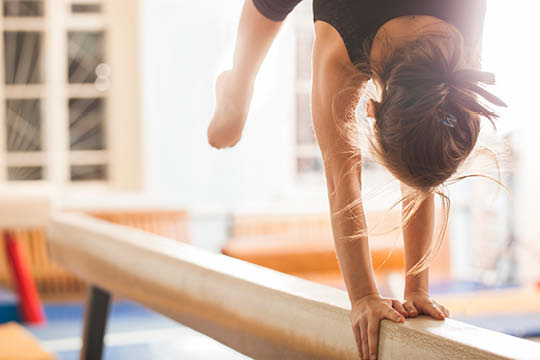OCD of the capitellum is an overuse injury to the elbow joint where the bone and overlying cartilage is injured. The injured section can separate from the rest of the bone, resulting in a loose fragment floating in the joint. This can cause pain, loss of movement and catching in the joint. OCD of the capitellum is usually seen in teenagers who play a lot of throwing and racquet sports, and most commonly, in gymnasts where the elbow is subjected to high weight-bearing loads. It represents nearly 10 per cent of all gymnastic injuries and nearly half of the serious injuries gymnasts encounter.
--What causes OCD of the capitellum?
OCD of the capitellum is caused by repeated heavy loading to the outer part of the elbow joint. This can be through weight bearing sports, especially when the palm is turned outwards. Throwing also places high repeated loads on the outer part of the elbow and this can be made worse if there is any looseness in the ligaments of the elbow. Sporting technique can affect the loads going through the lateral elbow and increase the risk of developing OCD of the capitellum.
There are also genetic factors that can put people at risk of developing OCD of the capitellum.
--How do I know if I have OCD of the capitellum?
There are good reasons to think that you may have OCD of the capitellum if you are:
- a teenage gymnast, thrower, weightlifter or tennis player
- have pain on the outside of your elbow
- the pain is aggravated by weight-bearing, throwing or racquet sports
- you have had a sore elbow for a while and you now have loss of movement or locking/catching.
Initially, there may only be some elbow stiffness but, if there is any doubt, early assessment is crucial. Early diagnosis before the injury progresses to fragmentation of the bone is far easier to treat and gives better long-term outcomes.
--How can physiotherapy help with OCD of the capitellum?
Accurate diagnosis is crucial in the selection of the best treatment for OCD of the capitellum. Your physiotherapist will be able to accurately assess and differentiate the source of your elbow pain. Through the process of a detailed history and examination, they will determine the source of your pain and the contribution of technique such as posture and workload.
In OCD of the capitellum, early management is crucial to try and prevent damage to the joint. If the symptoms have been there for a while, there is loss of range or locking, the outcome is generally less favourable and therefore accurate diagnosis is essential. In severe cases, surgery may be required to re-attach or remove the bone fragment.
Your physiotherapist will refer you for an X-ray, and even if this appears normal, may send you to your GP to arrange a CT scan or MRI.
You will be advised to rest from aggravating activities for a period of 6–12 weeks, in mild cases, or be referred to a specialist in cases where surgery may be the required treatment.
If you don't need surgery, your physiotherapist will give you exercises to maintain your fitness and muscle strength. They will talk to your coach to arrange alternate training while your elbow heals and discuss possible technical errors that may expose you to increased risk.
--How effective is physiotherapy for OCD of the capitellum?
The effectiveness in physiotherapy for OCD of the capitellum is determined by whether the bone has fragmented or not. If there is no bone fragment, a combination of rest and physiotherapy can typically see you return to sport after 6–12 weeks. If there is a bony fragment that requires surgery, the recovery is typically longer and it is more difficult to return to your previous level of sport. Early diagnosis is crucial.
--What can I do at home?
The most important thing that you can do at home if you suspect that you may have OCD of the capitellum is to make an appointment with your physiotherapist or doctor to be assessed. Delayed diagnosis increases the risk of a poor outcome. Resting from aggravating activities is essential until a clear diagnosis is made.
--How long until I feel better?
OCD of the capitellum can take 6–12 weeks to recover at best. During that time, you must follow your physiotherapist’s advice about appropriate rest. However, you can still do other activities that don’t stress the elbow. Your physiotherapist will help you to create an alternate exercise program while you are recovering.

